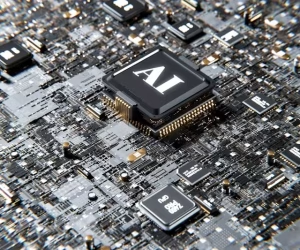It is a challenge we face in business. We have a diverse group of customers, but we often speak to them with a single voice. We send the same email, show the same ad, and offer the same promotion to everyone, hoping the message connects. The problem is, this generic approach to marketing is like casting a wide net and hoping to catch the right fish. It is inefficient, expensive, and in today’s crowded marketplace, it often fails to resonate or worse drives customers away.
For years, businesses have used basic segmentation, grouping customers by simple data like age or location. While better than nothing, this method is too broad and too slow to keep up with the modern consumer, especially in the age of artificial intelligence (AI).
The solution to this problem is a powerful technology called ai customer segmentation. This is not just a minor upgrade to old methods. It represents a fundamental shift in how we understand and communicate with our customers. By using the power of artificial intelligence, we can move beyond simple groups and discover deep, meaningful patterns in customer data. This process allows businesses of any size to achieve a new level of personalization, speaking to small, specific groups, or even individuals, with a message that is perfectly tailored to them.
This post will serve as your guide to ai customer segmentation. We will provide a clear, actionable breakdown of what it is, how it works, the real benefits it can bring to your business, and how you can start using it to build stronger, more profitable customer relationships.
Defining AI Customer Segmentation vs. Traditional Methods

To truly understand the power of ai customer segmentation, we first need to know how it differs from the traditional methods that businesses have used for decades. Basically, customer segmentation is the practice of dividing your customer base into groups of individuals who have similar characteristics. The goal is to be able to target these groups more effectively. Where the old and new methods diverge is in how these groups are created and how useful they are.
Traditional segmentation is a manual process. A marketing manager might decide to create segments based on a few simple rules. For example, one segment might be “customers aged 25 to 35 who live in New York,” and another might be “customers who have spent over $100 in the last year.” This approach has some value, but it is limited. The rules are based on human assumptions about what is important, and the segments are static. They do not change unless a person manually updates them.
On the other hand, the process of ai customer segmentation is autonomous and dynamic. Instead of relying on human-made rules, it uses machine learning algorithms to analyze all of your customer data at once. It looks at everything: purchase history, website clicks, how often a customer opens emails, what products they look at, and more. The AI finds the hidden patterns and creates segments, or clusters, of customers based on these complex behaviors. The key difference is that the AI might discover a segment you would never have thought to create, like “weekend shoppers who only buy discounted items after viewing them three times.” This level of detail is impossible to achieve manually.
Let’s break down the key differentiators. First is the data analysis itself. Traditional methods are rule based, meaning a human sets the parameters. The process of ai customer segmentation is algorithmic, meaning a computer program finds the most meaningful parameters on its own. This leads to the second difference: scalability. A person can only manage a handful of segments before it becomes too complex. An AI can create and manage thousands of micro segments without difficulty, allowing for much more precise targeting.
Third, the nature of the segments is different. Traditional segments are static; a customer is put in a box and stays there. With ai customer segmentation, the segments are dynamic. The system can automatically move a customer from an “at risk” segment to a “loyal” segment based on their recent activity. This provides a real time view of your customer base.
Finally, this leads to a difference in granularity. Traditional methods create broad segments, like “big spenders.” The sophisticated approach of ai customer segmentation can create highly specific micro segments, like “customers who are likely to buy a new product in the next 30 days based on their recent browsing behavior.” This distinction is what separates basic marketing from truly data driven, personalized communication. Using ai customer segmentation is a strategic advantage in a competitive landscape.
How Does AI Actually Segment Customers? A Look at the Technology

Understanding that ai customer segmentation uses technology to create groups is one thing. Knowing how it works gives you the confidence to trust its results. You do not need a Ph.D. in computer science to grasp the core concepts. The primary technology driving this process is a field of artificial intelligence known as machine learning.
Specifically, ai customer segmentation often uses a type of machine learning called “unsupervised learning.” Think of it this way. In “supervised” learning, you give the computer data that is already labeled. For example, you might show it thousands of pictures of cats and label each one “cat.” Eventually, the computer learns to identify a cat on its own. In “unsupervised” learning, you give the computer data with no labels and ask it to find patterns on its own. You give it all your customer data and say, “Find the natural groupings in here.” The AI then sifts through all the information to find customers who are remarkably similar to each other, forming clusters.
One of the most common algorithms used for this is called clustering. Imagine you have a large room full of people. If you were asked to group them, you might do it by hair color or the color of their shirts. A clustering algorithm does something similar with your data. An algorithm like K-Means Clustering, a workhorse of ai customer segmentation, essentially picks a few starting points in your data and groups every customer with their closest point. It repeatedly adjusts these center points until it finds the best possible groupings, where customers within a group are very similar and customers in different groups are very different.
Another aspect of the technology involves predictive analytics. This is where ai customer segmentation becomes truly powerful. The system does not just look at what customers have done in the past; it builds models to predict what they will do in the a future. By analyzing the data of customers who have churned, or stopped being a customer, the AI can build a profile of what an “at risk” customer looks like. It can then scan your entire customer base and create a segment of customers who fit this profile, even if they have not shown any obvious signs of leaving yet.
This allows you to step in with a special offer or a support call to prevent them from churning. The same predictive power can be used to identify customers with a high potential lifetime value, allowing you to focus your best marketing efforts on them.
Essentially, the technology behind ai customer segmentation automates the work of a massive team of data analysts. It processes vast amounts of information, identifies subtle correlations that a human would miss, and presents these findings as clear, actionable customer segments. This is what allows a small business to leverage big data insights without needing a big data budget. The complex work happens behind the scenes, providing you with the intelligence to make smarter marketing decisions. For any business looking to grow, embracing ai customer segmentation is no longer an option, but a necessity.
The Core Benefits: Why AI Segmentation is a Competitive Advantage

Adopting any new technology requires a clear understanding of its return on investment. The benefits of implementing ai customer segmentation are not just theoretical; they translate into measurable improvements across your business. By moving from broad marketing to hyper targeted communication, you gain a significant competitive advantage.
Enhanced Personalization
First and foremost is enhanced personalization. Modern consumers expect businesses to understand their needs. Generic emails are often ignored. The granular detail provided by ai customer segmentation allows you to personalize every touchpoint. For example, instead of sending a generic “20% off” coupon to everyone, you can send a specific offer to a segment of customers who have repeatedly viewed a certain product category. You can tailor website content, product recommendations, and advertising creative to match the specific interests and behaviors of each segment. This level of personalization makes customers feel seen and understood, which dramatically increases engagement and builds brand loyalty.
Customer Lifetime Value (CLV)
This leads directly to the second benefit: increased customer lifetime value, or CLV. CLV is a measure of the total profit your business expects to make from a single customer account. The insights from ai customer segmentation help you increase this value in several ways. By identifying your most valuable customers, you can create VIP programs or give them exclusive access to new products, ensuring they remain loyal.
By understanding the purchase cycles of different segments, you can send timely reminders or offers that encourage repeat business. When you consistently provide relevant experiences, customers are more likely to stick with your brand for the long term, increasing their total spending with you.
Return on Investment (ROI)
Third, you will see a much improved marketing return on investment. Every dollar you spend on marketing should work as hard as possible. When you target broad, undefined audiences, a significant portion of your ad spend is wasted on people who have no interest in your product. The detailed profiles created through ai customer segmentation ensure your message reaches the people most likely to convert. You can allocate more of your budget to high value segments and reduce or eliminate spending on segments that have historically shown low engagement.
This efficiency means every marketing campaign is more effective, driving more revenue for a lower cost. Implementing a strategy for ai customer segmentation is one of the fastest ways to optimize your marketing budget.
Customer Churn
A fourth critical benefit is reduced customer churn. It is almost always more expensive to acquire a new customer than it is to retain an existing one. As mentioned earlier, the predictive models in ai customer segmentation are excellent at identifying customers who are at risk of leaving. The system might flag a segment of users whose website visits have dropped, who have not opened recent emails, or whose purchase frequency has declined. With this early warning, you can be proactive.
You can launch a targeted re-engagement campaign with a special offer, a feedback survey, or a helpful guide to get them interested in your brand again. This proactive retention is far more effective than trying to win back a customer after they have already left.
Finally, the insights from ai customer segmentation extend beyond marketing. They can provide valuable guidance for product development. When the AI uncovers a segment of customers who are all using a particular feature in an unusual way or requesting similar new features, that is a powerful signal. You might discover an unmet need within a specific niche that you were not even aware of. This data can inform your product roadmap, helping you develop new products or services that you know have a built in audience waiting for them. This reduces the risk of new ventures and ensures your business is constantly evolving to meet the real needs of your customers.
Common Types of AI Segmentation Models
While the technology is complex, the outputs of ai customer segmentation are organized into models that are easy to understand and use. These models are lenses through which you can view your customer base. The AI can generate many types of segments, but most of them fall into a few key categories that are particularly useful for businesses.
One of the most powerful models is dynamic behavioral segmentation. This model groups customers based on their actions, not just their identities. It analyzes real time data, such as what pages a person visits on your website, how long they stay, what products they add to their cart, how often they log in to your app, and their purchase history. This creates segments like “frequent high value shoppers,” “cart abandoners,” “one time buyers,” and “window shoppers.”
Because it is dynamic, a customer can move from the “window shopper” segment to the “frequent buyer” segment instantly after making a purchase, triggering a new set of automated marketing messages. This real time responsiveness is a hallmark of effective ai customer segmentation.
Another advanced model is predictive lifecycle segmentation. This goes beyond what a customer has done and focuses on where they are in their journey with your brand. The AI analyzes patterns to classify customers into stages. You might have segments like “new leads with high potential,” “active and engaged customers,” “customers at risk of churning,” and “lapsed customers who could be won back.” Each of these segments requires a completely different communication strategy.
You nurture new leads, reward engaged customers, intervene with at risk customers, and send re-engagement campaigns to lapsed ones. The use of ai customer segmentation here ensures that you are always sending the right message at the right time in the customer’s lifecycle.
A fascinating model that is gaining traction is AI powered psychographic segmentation. Traditional psychographics, which segment people by their attitudes, interests, and values, have always been difficult to measure at scale. They usually relied on surveys and focus groups. Today, ai customer segmentation can use a technology called Natural Language Processing to analyze text data from sources like product reviews, support tickets, and even public social media comments.
By analyzing the words people use, the AI can infer their interests, their frustrations, and their overall sentiment toward your brand. This can create segments like “price conscious innovators,” “service focused traditionalists,” or “brand loyal enthusiasts,” allowing you to tailor your messaging to their core motivations.
Finally, there is the automated RFM analysis model. RFM stands for Recency, Frequency, and Monetary value. It is a classic marketing model used to identify a business’s best customers. Traditionally, this was a manual and time consuming analysis done maybe once a quarter. With ai customer segmentation, RFM analysis can be performed automatically and in real time. The system constantly scores every customer based on how recently they purchased, how often they purchase, and how much they spend. It then creates segments like “champions” (high on all three scores), “hibernating customers” (low recency but high frequency and monetary), and “new customers” (high recency but low everything else).
This automated system allows you to instantly see who your best customers are and take action to keep them. Each of these models provides a unique and valuable view of your customer base, and a comprehensive ai customer segmentation strategy will often use several of them in combination.
Real-World Examples of AI Segmentation in Action
To make the concept of ai customer segmentation more concrete, let’s look at how it works in practice for different types of businesses. These examples show how the technology can be adapted to solve unique challenges and drive growth.
E-Commerce
Consider an e-commerce business that sells clothing. Without AI, they might send a weekly email blast to all subscribers announcing new arrivals. With an ai customer segmentation platform, they can do much more. The system analyzes browsing and purchase data and might create a segment called “high-intent male athletic shoe shoppers.” This segment could consist of men who have viewed athletic shoes more than twice in the past week, have previously purchased running shorts, and have a high predictive score for making a purchase soon.
Instead of a generic email, this specific segment automatically receives a targeted email featuring the exact shoes they were looking at, along with a curated selection of matching athletic socks and shirts. The result is a much higher click through and conversion rate because the message is perfectly relevant.
Software-as-a-Service (SaaS)
Now, let’s think about a Software as a Service, or SaaS, company that provides project management software. Their goal is to increase user engagement and prevent churn. Their ai customer segmentation tool is connected to their application’s usage data. The AI might identify a segment of new users who signed up for a free trial but have not used a key feature, like the “team collaboration” tool, within their first three days. The system flags this segment as “at risk of low adoption.”
Automatically, this group is entered into an educational email sequence. They receive a friendly email with a link to a short video tutorial specifically about the collaboration feature and its benefits. This proactive, helpful intervention can significantly increase feature adoption and the likelihood that a trial user will convert to a paying customer.
Local Service Business
The power of ai customer segmentation is not limited to online businesses. It can be incredibly effective for a local service business as well. Imagine a local HVAC company that handles heating and air conditioning installation and repair. They have a customer database in their CRM with service history going back years. By applying ai customer segmentation, their system analyzes this data. It might identify a segment of homeowners whose air conditioning units are between 12 and 15 years old and who have had at least two service calls in the last two years.
The AI flags this as a “high-probability replacement” segment. In the early spring, before the first heat wave hits, this segment automatically receives a targeted direct mail piece and email offering a free consultation and a special discount on a new, energy efficient unit. This is a perfect example of using historical data to predict a future need, a core strength of ai customer segmentation.
A Practical Roadmap to Getting Started

Implementing ai customer segmentation may seem daunting, but it is more accessible now than ever before. Many modern software platforms have these capabilities built in. Following a clear roadmap can help you integrate this technology into your business operations smoothly.
The first and most critical step is to centralize your data. The AI is only as smart as the data you feed it. You need to bring together information from all your customer touchpoints. This includes data from your Customer Relationship Management (C-level platform, your e-commerce store, your website analytics like Google Analytics, your email marketing platform, and your Point of Sale system if you have a physical store. The goal is to create a single, unified view of each customer. Ensuring this data is clean and organized is the foundational work upon which any successful ai customer segmentation strategy is built.
Second, you must define your business objectives. What are you trying to achieve? Do not just implement technology for technology’s sake. Set clear, measurable goals. For example, your goal might be to “reduce customer churn by 10% in the next six months” or “increase the average order value from our top customer segment by 15%.” Having specific goals will help you focus your efforts and measure the success of your ai customer segmentation program.
Third, you need to select the right tools. The market for marketing technology is vast. Some platforms are all in one solutions, like HubSpot or Salesforce, which have powerful AI and segmentation features included in their higher tier plans. Other tools are more specialized and can integrate with your existing software stack. When choosing a tool, consider your goals, your budget, and how well it can connect to your existing data sources. For many small businesses, starting with the AI features already present in their CRM or email marketing platform is the most practical first step.
Fourth comes the process of analyzing and interpreting the segments. Once you have your data connected and your tool is running, the AI will generate the segments. Your job is to make sense of them. The AI will show you a cluster of customers, but you need to understand the story behind them. Give each segment a descriptive name, like “deal-seeking weekend shoppers” or “brand-loyal advocates.” Create a persona for each one. What motivates them? What are their pain points? This human interpretation is what turns raw data into actionable marketing strategy. A good ai customer segmentation tool will provide insights to help with this analysis.
Finally, the most important step is to activate and test. A segmentation strategy is useless if you do not act on it. Use your new segments to create targeted marketing campaigns. Send one email to your loyal advocates and a different one to your at-risk customers. Show one ad to your high-potential new leads and another to your price-conscious shoppers. Crucially, you must measure the results. Compare the performance of your targeted campaigns against a control group that receives a generic message. This testing and measurement cycle is what allows you to refine your strategy over time and prove the value of your investment in ai customer segmentation.
Conclusion: The Future is Dynamic and Data-Driven
We have moved beyond an era where marketing to the masses is effective. Today’s customers expect and reward personalization. The practice of ai customer segmentation is the key that unlocks this level of personalization at scale, making it accessible not just to massive corporations but to small and medium sized businesses as well. It provides the ability to understand customers on a deeper level, anticipate their needs, and communicate with them in a way that is genuinely relevant and helpful.
By embracing this technology, you are investing in a more intelligent and efficient way of doing business. You can stretch your marketing budget further, build stronger and more lasting customer loyalty, and gain insights that can guide the future direction of your company. The goal is simple: to move from marketing to broad segments to building real relationships with individuals. The journey starts with understanding the power of your data, and a robust ai customer segmentation strategy provides the technical means to achieve this, ensuring your business is ready for a future that is dynamic and entirely data driven.






